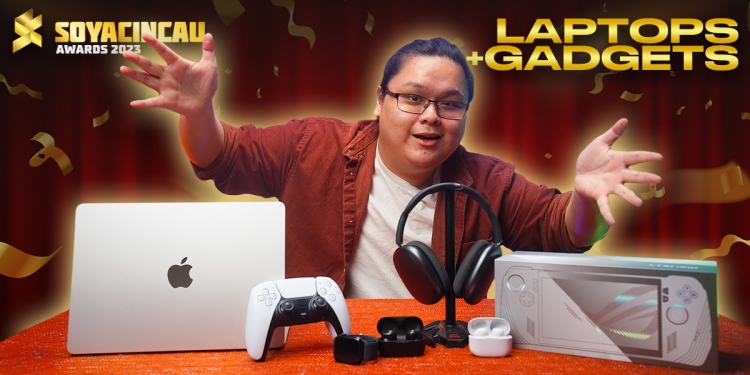It’s hard to imagine life without our gadgets these days, and while smartphones have taken over the world as perhaps the number one tool we all need and own, it’s fair to say that it’s also far from the only gadget we carry around everyday.
From earbuds to laptops and even the relatively new gaming handheld segment, we’ve got plenty of different gadgets all around us. As such, we’ll be taking a look at some of the best laptops (both premium and more value-focused ones), smartwatches, headphones and even gaming devices 2023 has had to offer.
In case you were wondering, the panel members consist of Alexander Wong, Najib Hamid, Raymond Saw, Jonathan Lee, Hanif Azrai, Putra Aziz, Sharil Abdul Rahman, Chief Chapree, and Sudarshan Duke, with our social media manager Amalin Aisyah also contributing.
Read the rest of our awards
- SoyaCincau Awards 2023: The best smartphones of the year
- SoyaCincau Awards 2023: The best tablets of the year
- SoyaCincau Awards 2023: The best laptops and gadgets of the year
- SoyaCincau Awards 2023: The best electric vehicles this year
- SoyaCincau Awards 2023: The best telcos this year
Best Laptop of the Year
GOLD: Asus Zenbook Pro 14 OLED
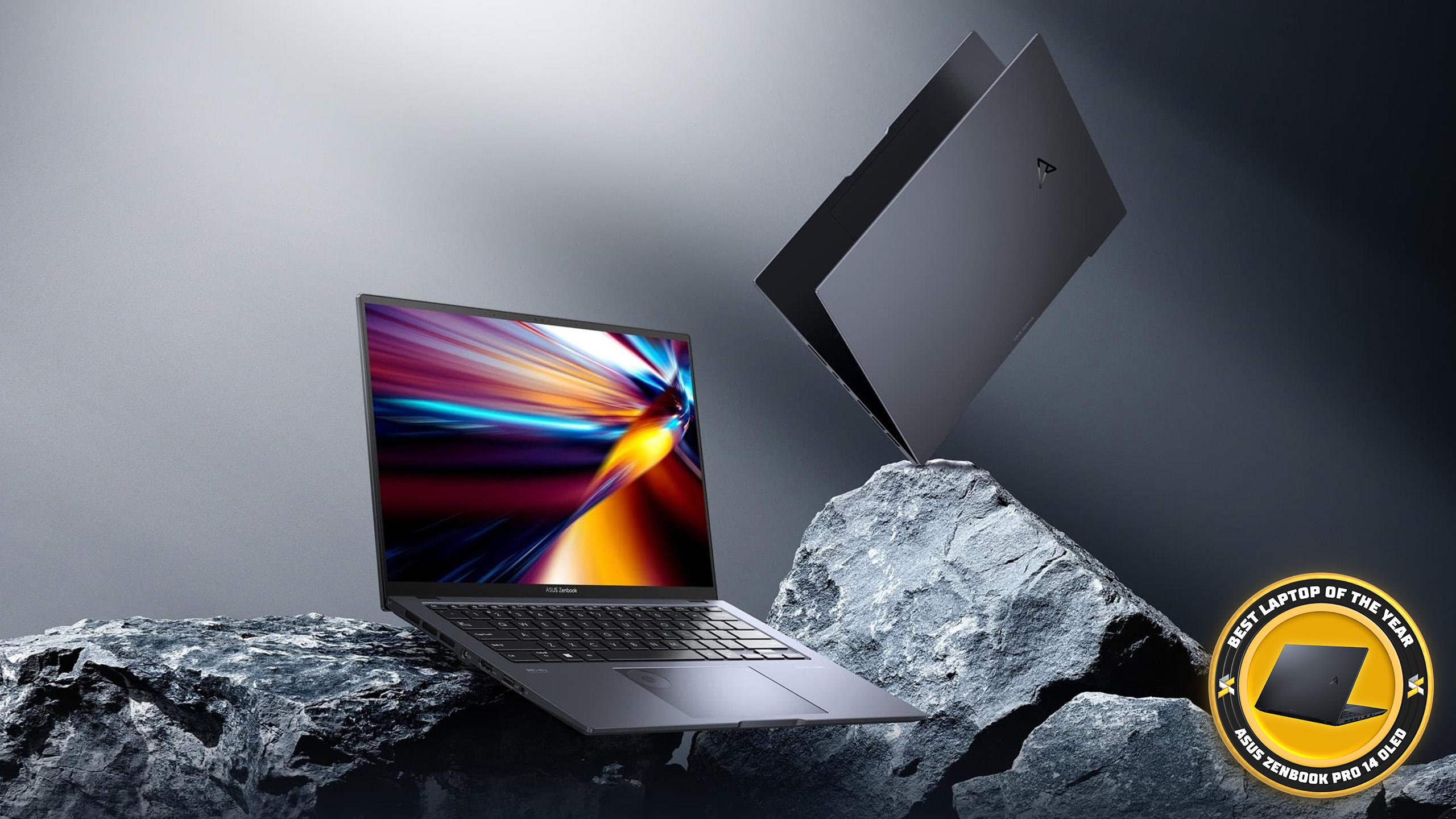
If I had about RM10,999 laying around and all I wanted in this world was the best laptop money can buy, it’s hard to look past the Asus Zenbook Pro 14 OLED. Despite looking like your average everyday laptop and weighing in at just 1.6kg, the Zenbook Pro 14 OLED is actually one of the most powerful content creator laptops you can get.
You’ll find a 14.5-inch touchscreen OLED display with a 2880 x 1800p resolution, pushing a 120Hz refresh rate, a peak brightness of 550nits, full coverage of the DCI-P3 colour gamut and has a layer of Corning Gorilla Glass NBT too for scratch resistance. Under the hood though is where the true power lies, with a 13th Gen Intel Core i9-13900H, 32GB of DDR5 RAM, a 1TB SSD and an NVIDIA GeForce RTX 4070, making it not just capable for heavy content creation but also the occasional game or two.
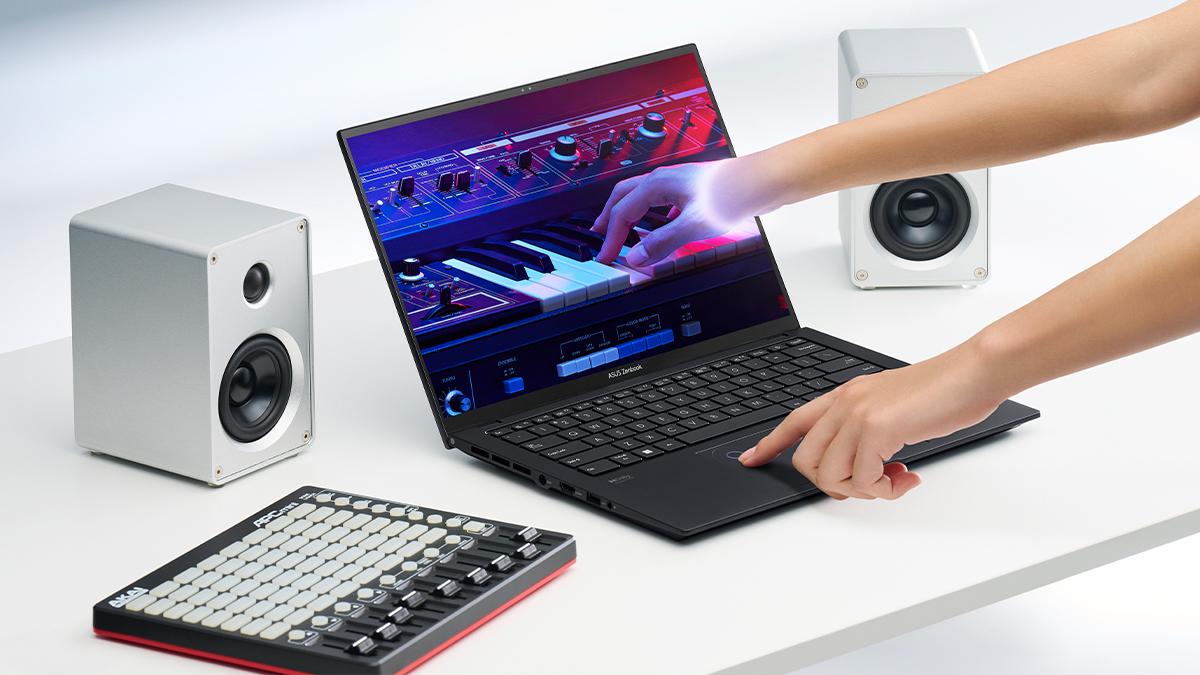
There’s a 76Wh battery as well as plenty of I/O with a Thunderbolt 4 port, a USB-C 3.2 Gen 2 port, a USB-A 3.2 Gen 2 port, an SD card reader, a HDMI 2.1 port and a 3.5mm combo audio jack.
Seeing as it checks every box you could want in a premium laptop—portability, performance, practicality—it’s almost a no-brainer then that we awarded the best laptop of the year award to the Asus Zenbook Pro 14 OLED. – Raymond Saw
Learn more about the Asus Zenbook Pro 14 OLED here.
SILVER: Acer Swift X 14
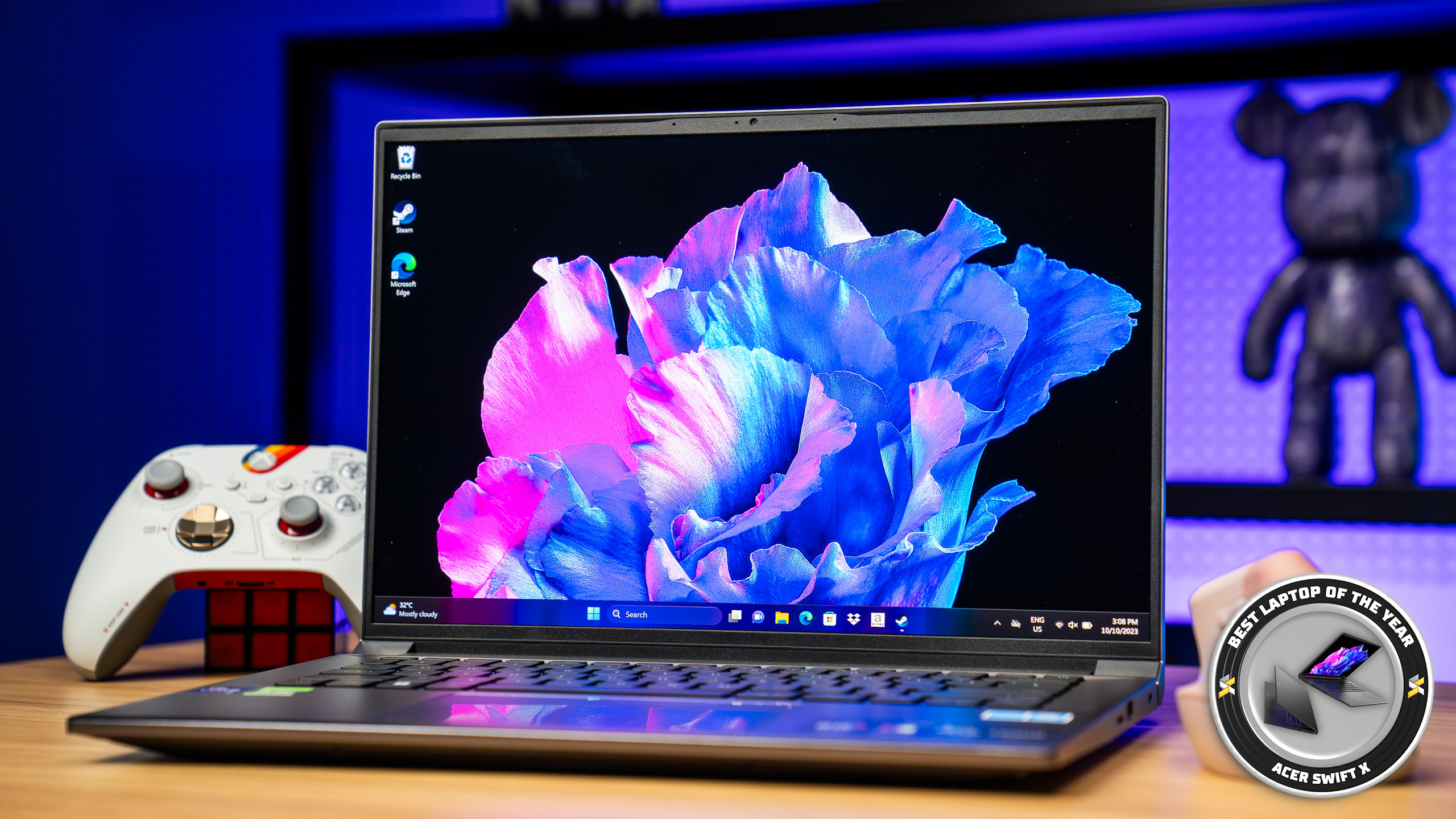
We had the Acer Swift X 14 come into our office for review earlier this year, and by the end of it I very nearly ordered one for myself. That’s how much I loved the Swift X 14, as while it still retained a lot of what made the original Swift X from two years ago good, it also came with a major upgrade that made the whole package just that much better.
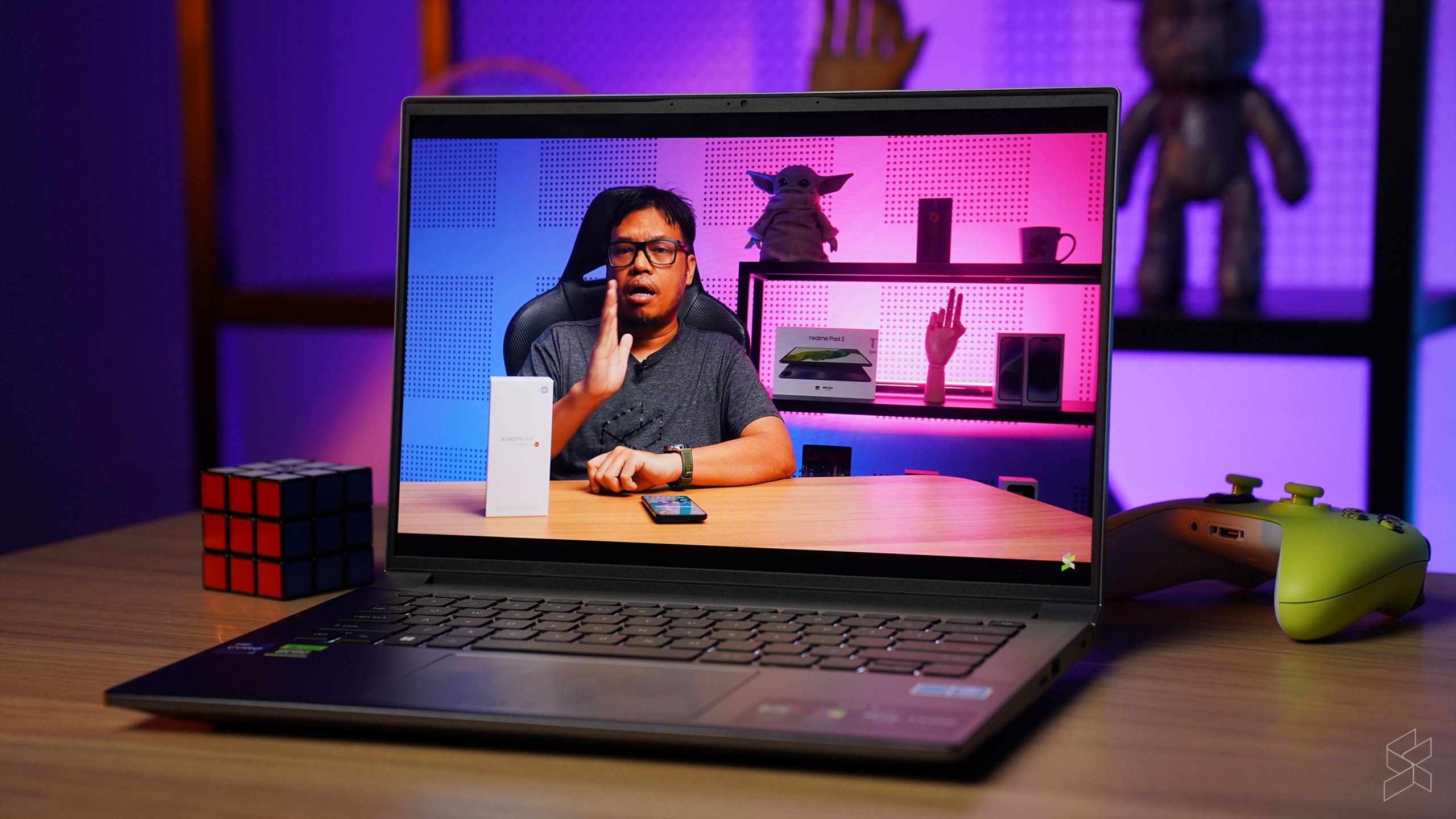
It’s really the display that Acer tweaked here that made the Swift X 14 a much more capable laptop. The Swift X 14 now comes with a 14.5-inch, 2880 x 1800p OLED display, a big jump from the lacklustre IPS panel on its predecessor. And while this also meant a price increase, you’ll still find plenty to love here with up to an Intel Core i7-13700H, up to 32GB of RAM and a 1TB SSD, as well as up to an NVIDIA GeForce RTX 4050 and a 76Wh battery, giving you all the horsepower you need in a chassis that’s just 1.55kg.
While perhaps not the best laptop overall, the Swift X 14 still does enough to command a second place finish for laptop of the year. – RS
Read our full review of the Acer Swift X 14 here.
BRONZE: MacBook Air 15″
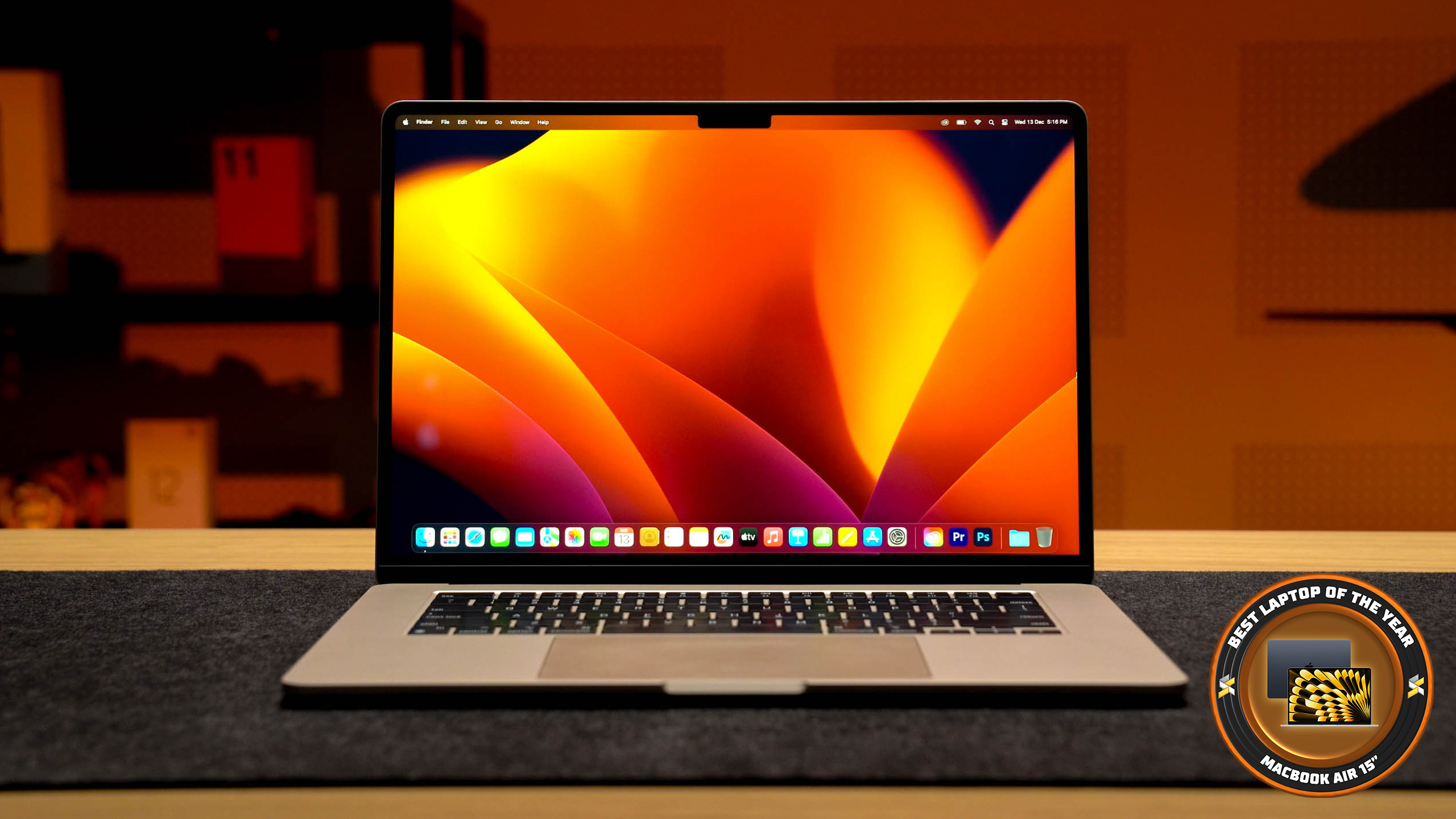
Apple’s laptops are undoubtedly some of the most well known out there, be it for students, content creators or anyone seeking a well built machine really. The MacBook Air in particular is a very popular choice, being significantly cheaper than the MacBook Pro yet still offering a lot of that Apple goodness. If you’re someone who wants a larger screen than the 13-inch one on the regular MacBook Air though, Apple has you covered with this year’s larger MacBook Air 15″.
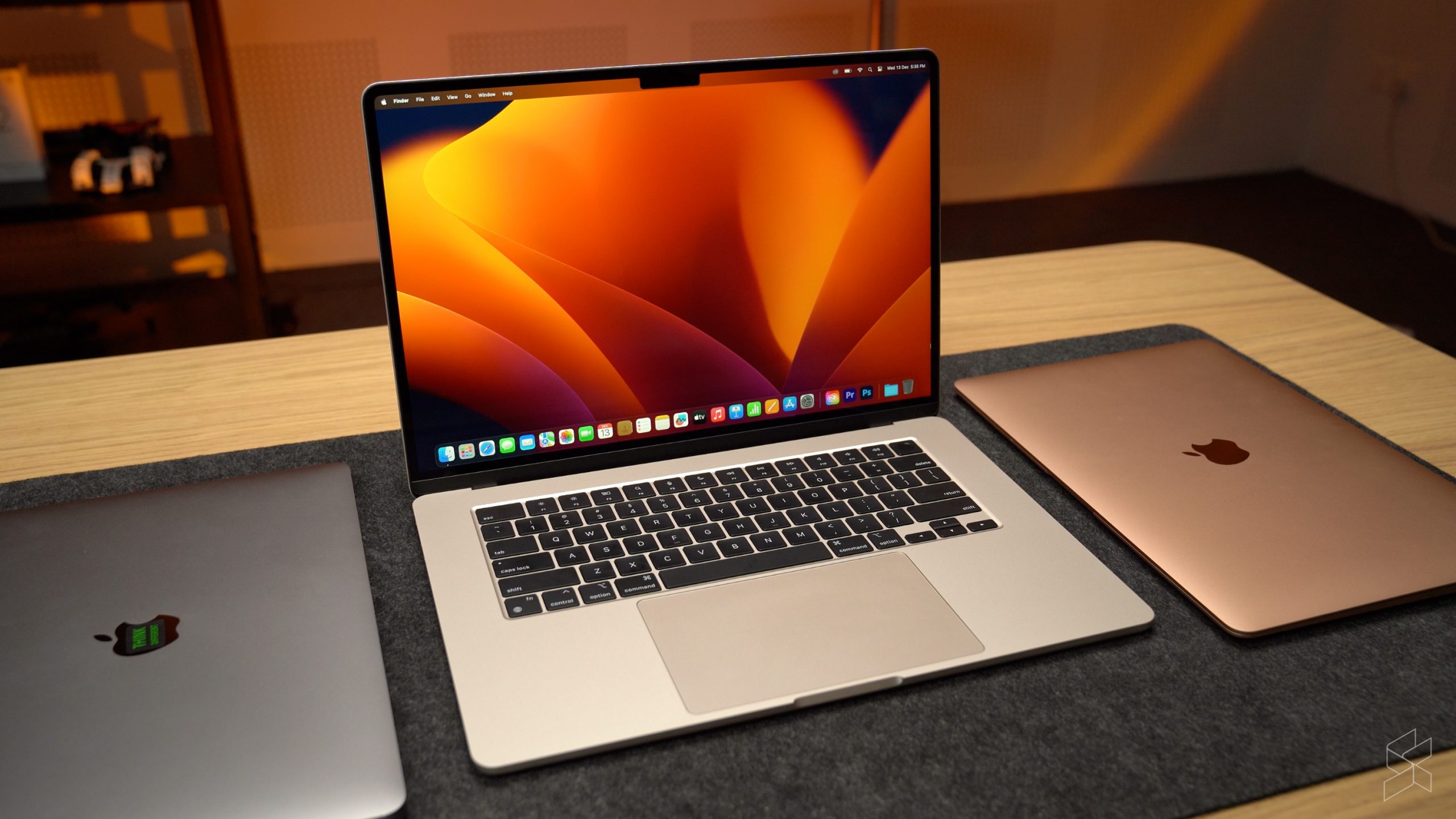
The MacBook Air 15’s biggest upgrade is of course the larger 15.3-inch, Liquid Retina display with a 2880 x 1864p resolution. It still offers a peak brightness of 500nits and covers the DCI-P3 colour gamut too. Powering it is the Apple M2, a chip that may not be Apple’s latest and greatest anymore but is still a very capable piece of silicon. And with its four speaker setup, MagSafe charging, twin Thunderbolt 4 ports and perhaps the best battery life on any 15-inch laptop out there, the MacBook Air 15 takes its place as our bronze winner for laptop of the year. – RS
Learn more about the MacBook Air 15″ here.
Value Laptop of the Year
GOLD: Acer Swift Go 14
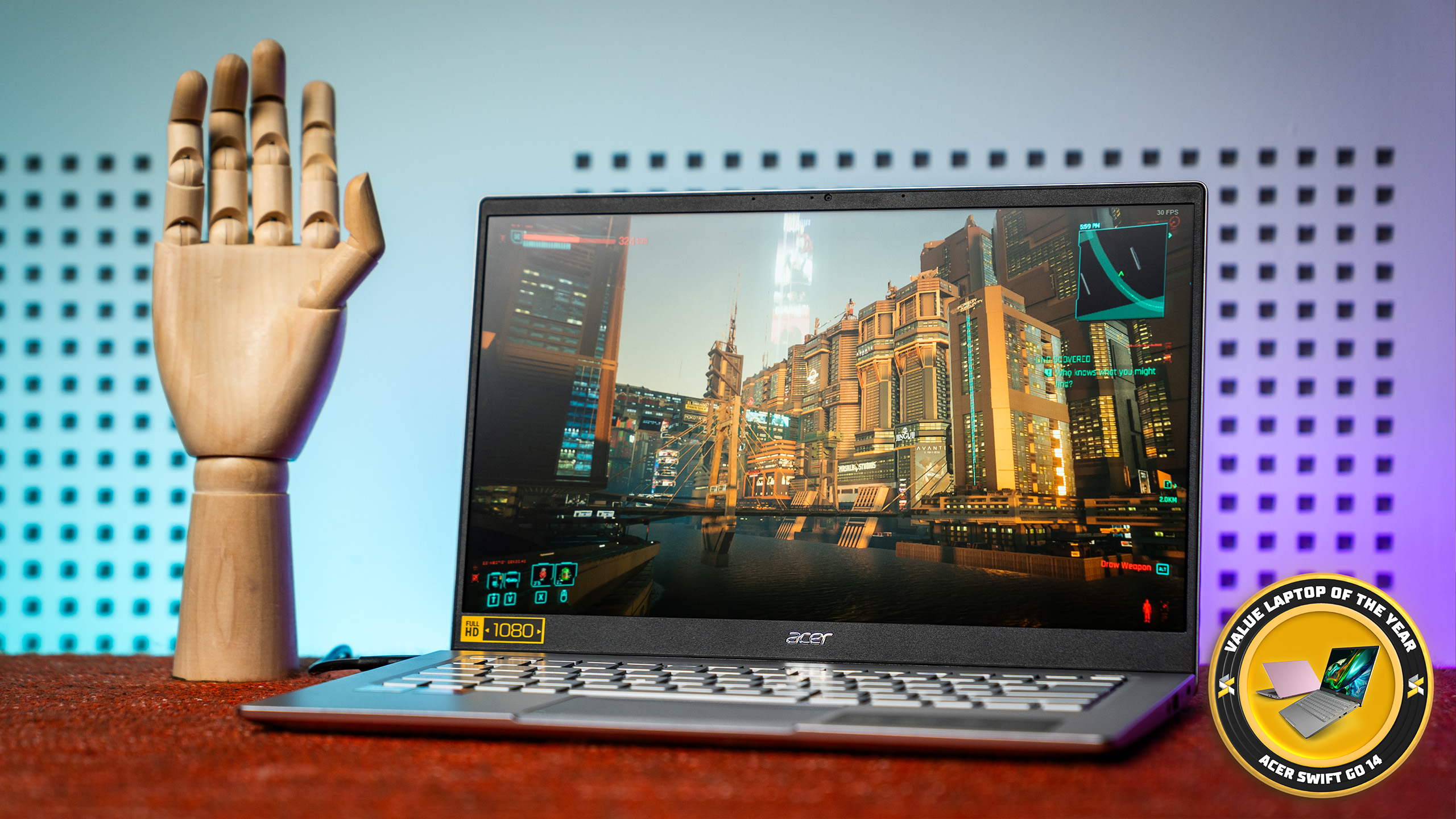
Acer is perhaps no surprise here as a frontrunner in the best bang-for-buck laptop category, as the Taiwanese giant is known for their laptops that offer a lot for the money. This year, when considering the best value laptop of 2023, it’s hard to look past the Acer Swift Go 14, a laptop that—having reviewed it ourselves—we found to be an exceptional device for the everyday casual user who wants nothing more than a simple, no-nonsense laptop that will get the job done.
Officially starting at RM3,199 but available for much less than that on places like Shopee during sales periods, the Acer Swift Go 14 offers a sleek aluminium chassis with a 14-inch, FHD IPS display, and plenty of necessary I/O with two USB-C 3.2 Gen 2 ports, two USB-A 3.2 Gen 1 ports, a HDMI 2.1 port and a 3.5mm audio jack.

We’d also personally recommend the configuration with an AMD Ryzen 5 7530U, 16GB of RAM and a 512GB SSD, though a more powerful Ryzen 7 7730U option is available too. Rounding it off is a 50Wh battery that was mostly fine, keeping it chugging along for roughly five and a bit more hours. – RS
Read our full review of the Acer Swift Go 14 here.
SILVER: Asus Vivobook 15X
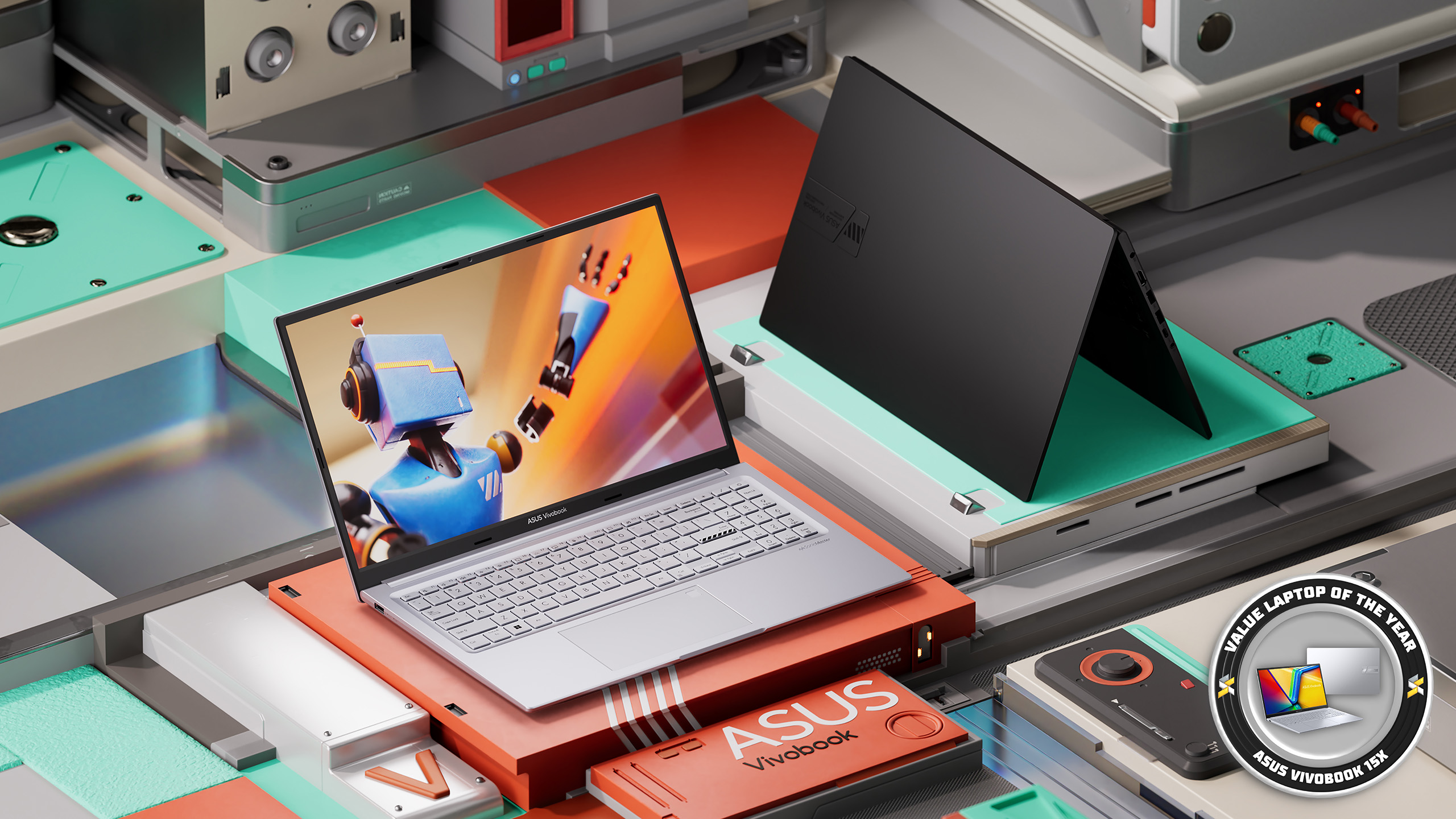
The Vivobook 15X from Asus does a lot of the simple things right while keeping the price relatively low too, starting at just RM3,099. You’ll find a sleek look with a metal lid, a large 15.6-inch, FHD IPS display that can open fully flat and under the hood is your choice between the Intel Core i5-1335U or the AMD Ryzen 7 7730U, 8GB of RAM and up to 1TB of storage.
Just like our other entries on this podium, the Vivobook 15X comes with a healthy amount of I/O for a laptop, with a HDMI 1.4 port, a 3.5mm audio jack, a USB-C 3.2 Gen 1 port, a USB-A 3.2 Gen 1 port and a USB-C 2.0 port.
Learn more about the Asus Vivobook 15X here.
BRONZE: Acer Aspire Vero 14
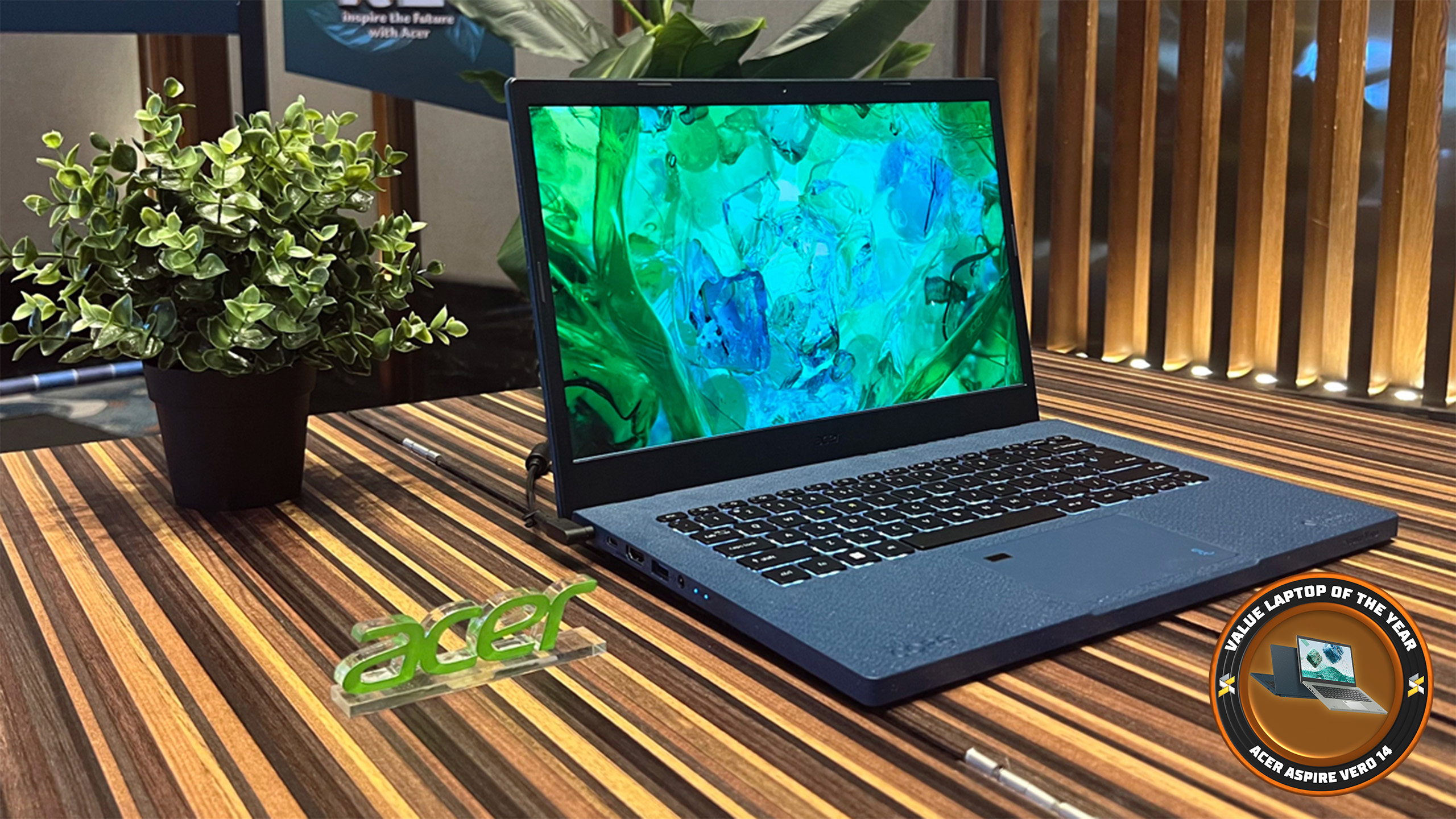
Another podium spot for Acer here, thanks to the Acer Aspire Vero 14. Just like the Swift Go 14 from before, the Aspire Vero 14 was one that we considered one of the best laptops to get priced under RM3,000 as it officially starts at just RM2,599.
Despite that, you can still kit it out with up to an Intel Core i7-1355U, up to 16GB of RAM and a 512GB SSD is on all models by default too. You’ll find a HDMI 2.1 port, two USB-A 3.2 Gen 1 ports, a USB-C Thunderbolt 4 port and a 3.5mm audio jack as well as a 50Wh battery keeping the lights on. As for its display, there’s a 14-inch, FHD IPS screen similar to the aforementioned Swift Go 14.
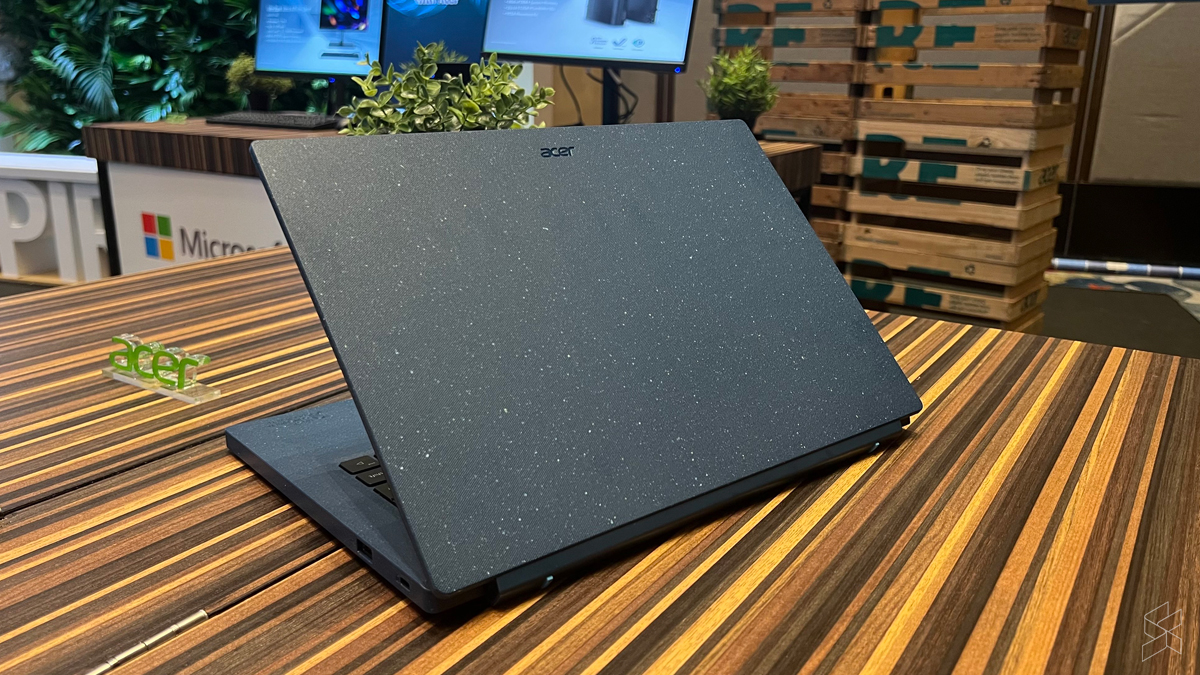
But what really sets the Aspire Vero 14 apart from the rest though is that it’s positioned as an environmentally friendly laptop. Built out of 40% post-consumer recycled plastic in its chassis, Acer says that it has reduced up to 30% in carbon dioxide emissions manufacturing the Aspire Vero 14’s chassis.
On top of that, the trackpad is made of recycled ocean bound plastic too while the entire laptop comes in a paint-free design. You’ll even find that it comes in packaging made of recycled paper and cardboard, which you can also reuse by folding it into an ergonomic laptop stand. – RS
Learn more about the Acer Aspire Vero 14 here.
Gaming Device of the Year
GOLD: Asus ROG Ally

The Asus ROG Ally was barely considered a real product when it debuted on April’s Fool Day earlier this year, but after Asus finally showed it off, it became one of the biggest new gaming devices out there. While the Valve Steam Deck had existed before, no one had really perfected the whole Windows-powered gaming handheld before—that is, until the ROG Ally came along.
The ROG Ally has plenty of things going for it with a 7-inch, FHD IPS display capable of 120Hz, the AMD Ryzen Z1 Extreme processor and a relatively lightweight build with all of the necessary buttons similar to your standard Xbox controller.
But really its the versatility of Windows that makes it stand out compared to the Steam Deck, as because it runs Windows it can run pretty much anything your standard gaming PC would too, with only the mediocre battery life being the main issue here. And if you want you can even make it become your new gaming PC, with optional accessories like a dock and eGPU for your ROG Ally.
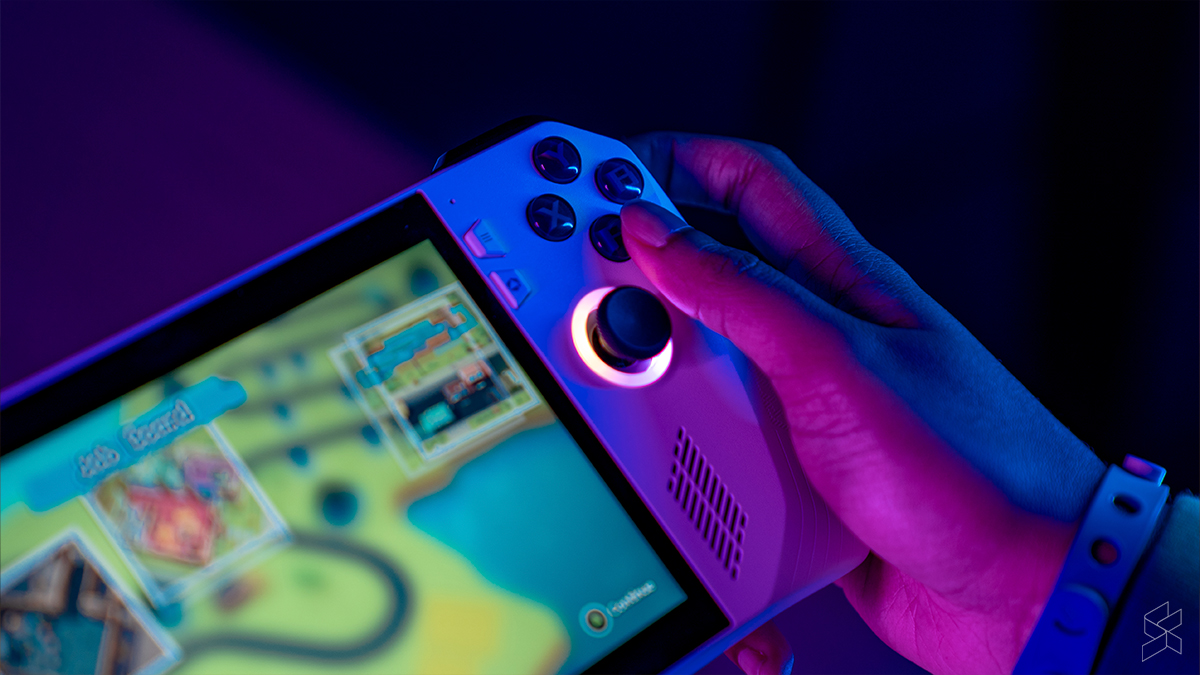
With a relatively affordable RM3,299 price tag too, the ROG Ally is very much our deserving winner of the best gaming device of the year. – RS
Read full review of the Asus ROG Ally here.
SILVER: Samsung Odyssey OLED G9
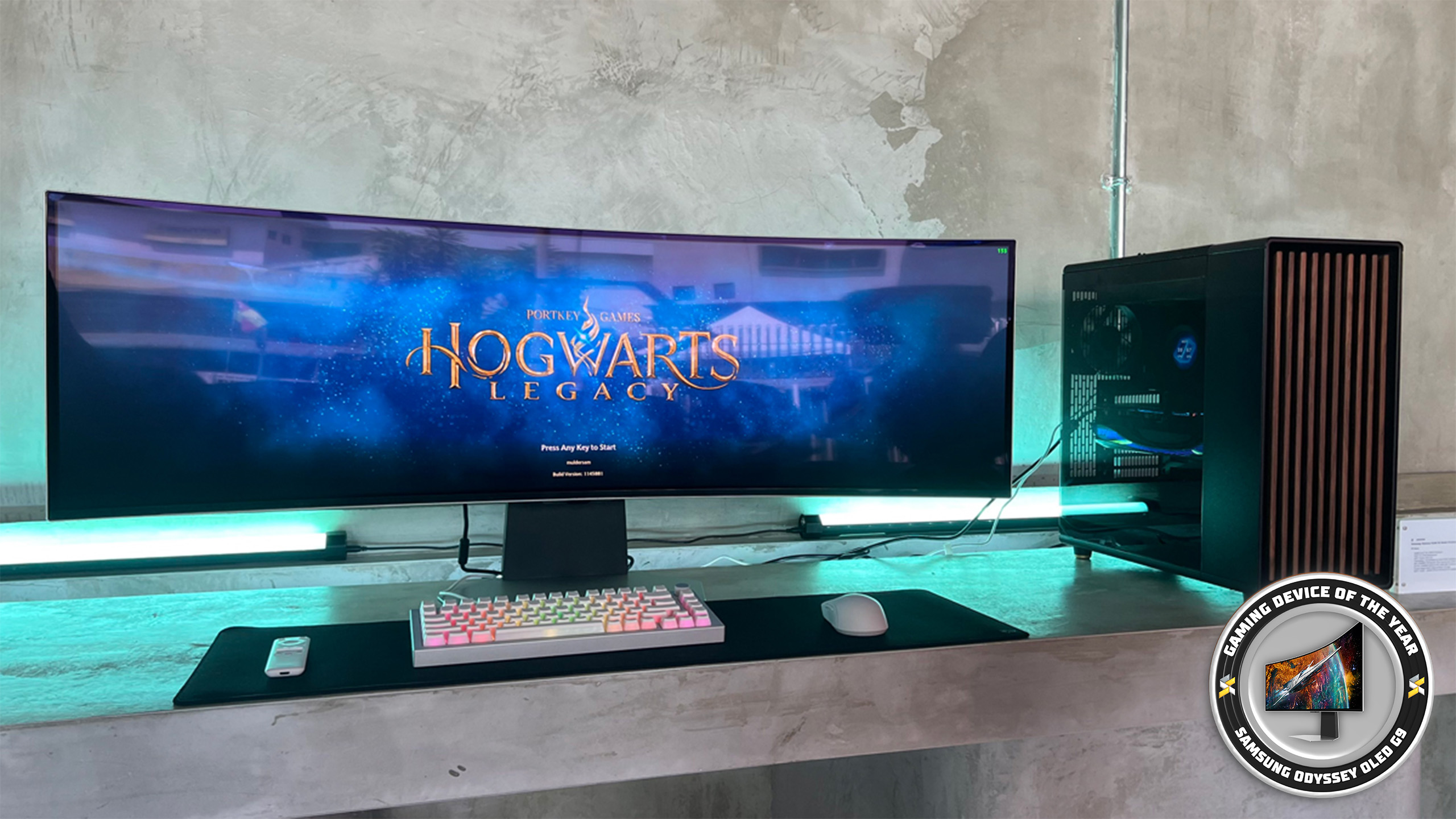
When the Odyssey OLED G9 first debuted, Samsung claimed that this massive 49-inch monitor was the world’s first DQHD OLED monitor. It features a display ratio of 32:9 with a resolution of 5120 x 1440p displays, essentially making it more like have two 1440p monitors side-by-side except with the Odyssey OLED G9, there’s no bezels between them.
The Odyssey OLED G9 will find itself well suited to any gamer with deep wallets here, as on top of its size, it can push a refresh rate of up to 240Hz, on top of a 0.03ms response time, a typical brightness of 250nits and a 1,000,000:1 contrast ratio.
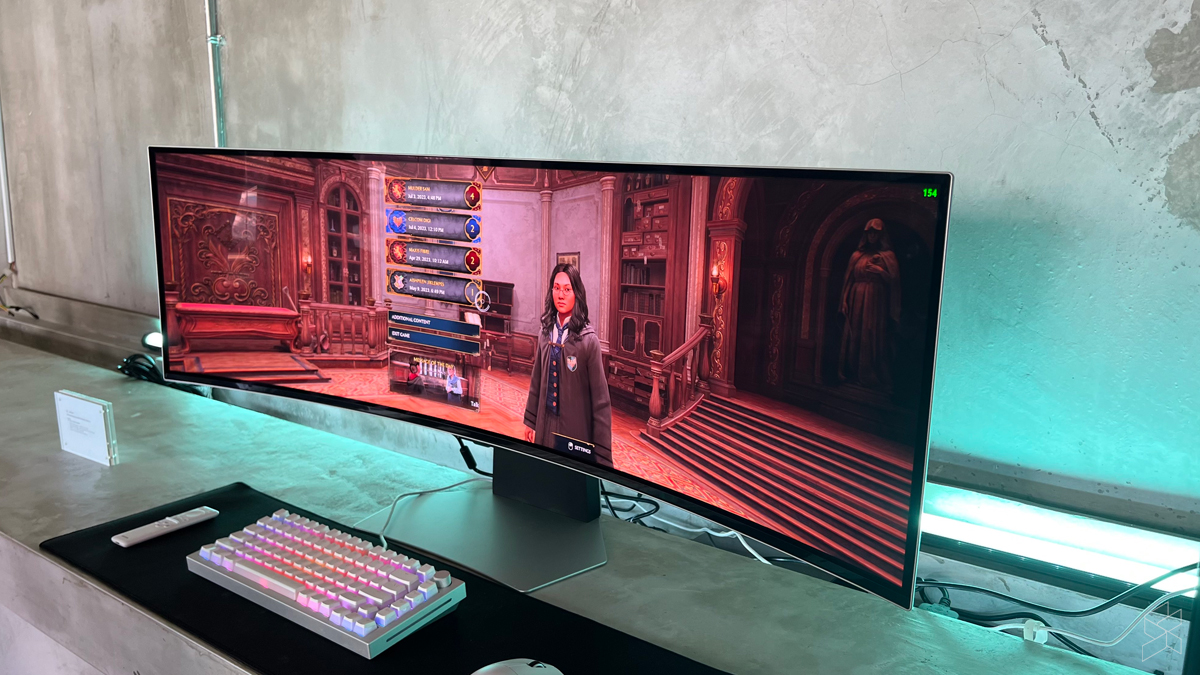
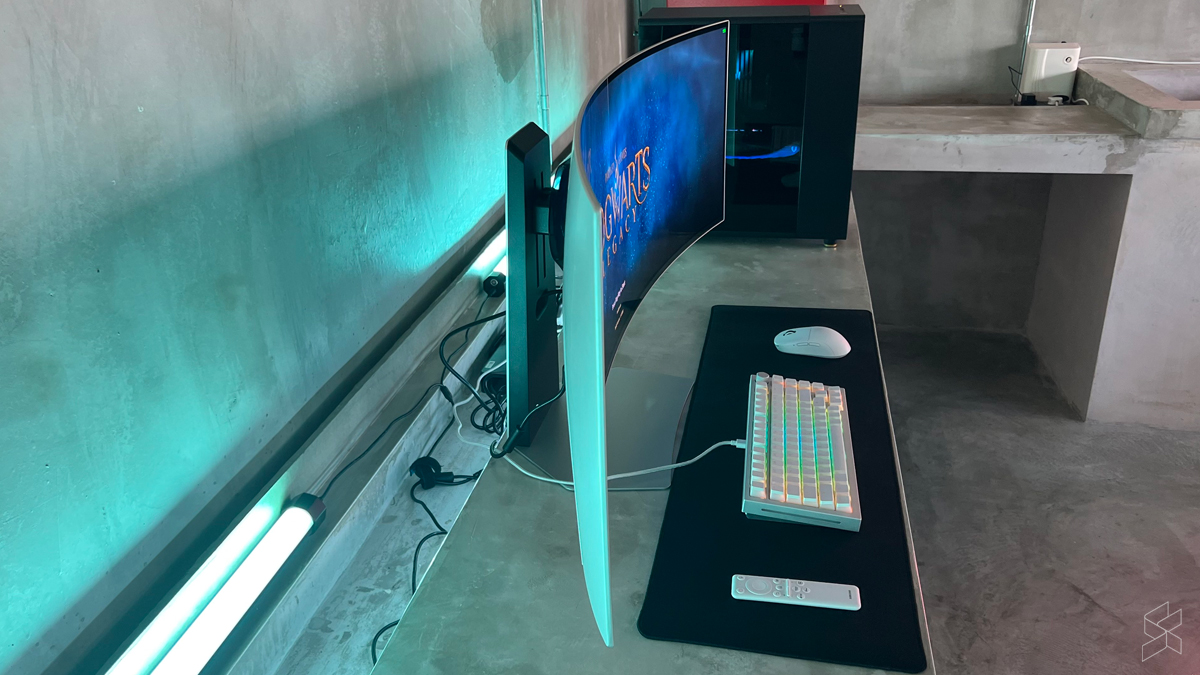
On the back, meanwhile, is a HDMI 2.1 port, a DisplayPort, a Mini HDMI port, three USB-C ports and, of course, the necessary RGB lighting too. You can even find the Odyssey OLED G9 with Tizen installed, giving it smart TV-like functionality to stream stuff off Netflix and YouTube all on its own. – RS
Learn more about the Samsung Odyssey OLED G9 here.
BRONZE: Lenovo Legion Go
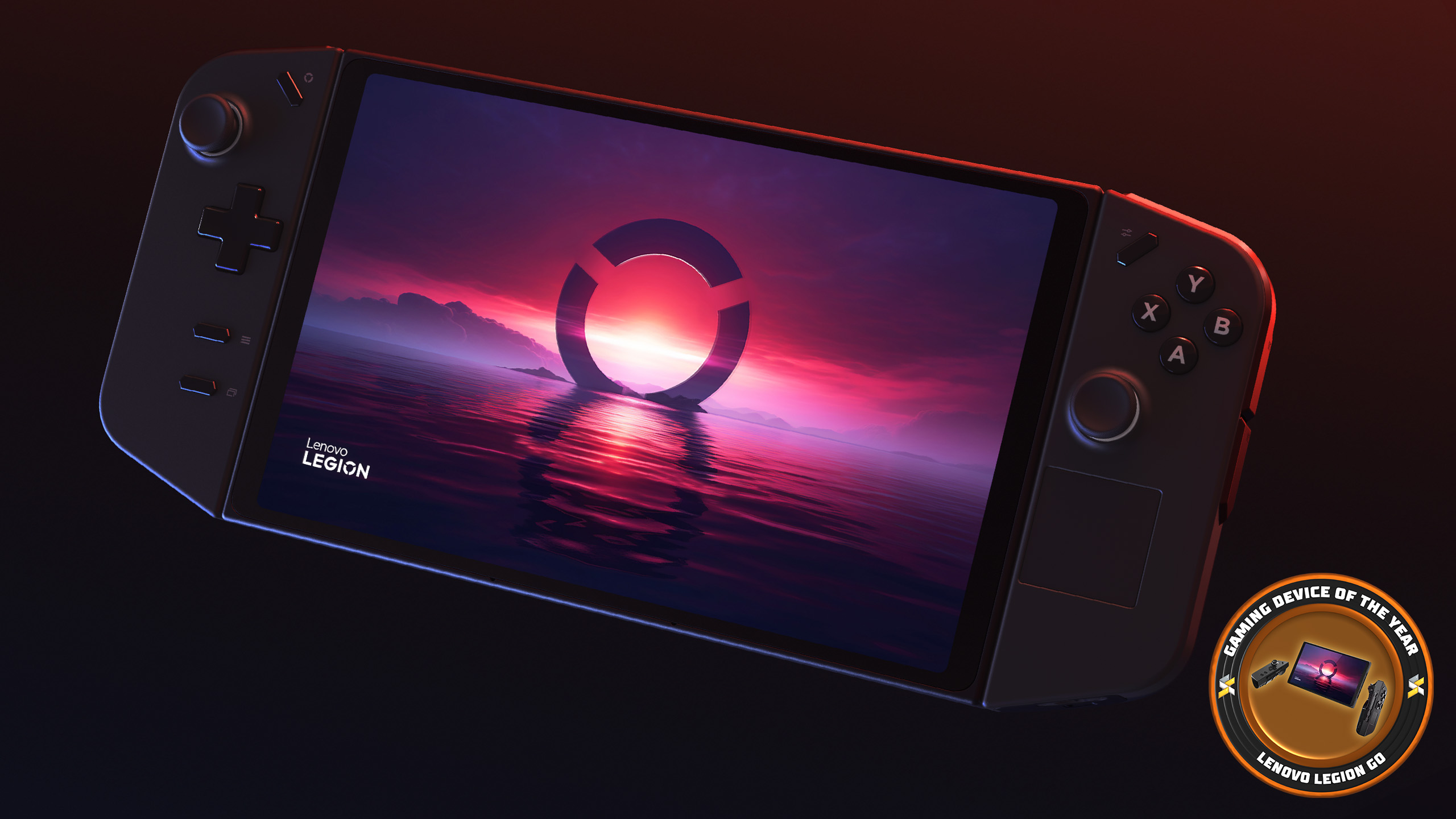
The Lenovo Legion Go is yet another handheld gaming device that debuted a while after the ROG Ally. And while it is a fair bit more expensive than the Asus machine despite using the same AMD Ryzen Z1 Extreme chip, the Legion Go does have a couple of tricks of its own.
For starters, it has a larger 8.8-inch QHD+ IPS display pushing a 144Hz refresh rate, and has a larger 49.2Whr battery too. On top of that, the controllers themselves each have a 900mAh battery too—that’s because you can detach the controllers from the main display, almost like a Nintendo Switch, giving it a little bit more versatility in how you want to set up the Legion Go.

There’s also an option to use the right controller in FPS games by attaching it onto magnetic dock. Oh, and the joysticks themselves use hall effect sensors too, minimising the risk of joystick drift. – RS
Learn more about the Lenovo Legion Go here.
Smartwatch of the Year
GOLD: Samsung Galaxy Watch 6 Classic
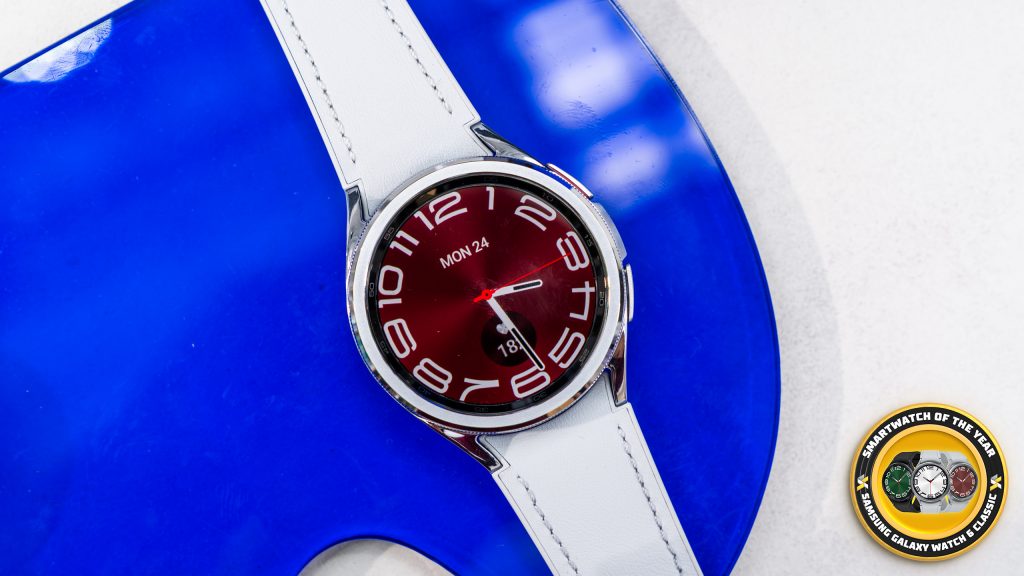
For the Samsung Galaxy Watch 6 Classic to be the best smartwatch of the year, it had to bring some pretty major upgrades over the rather lacklustre Galaxy Watch 5. And Samsung did just that by introducing a feature it omitted from its predecessor, bringing back the signature rotating bezel onto the Galaxy Watch 6 Classic and making navigating through the WearOS UI much easier and intuitive.
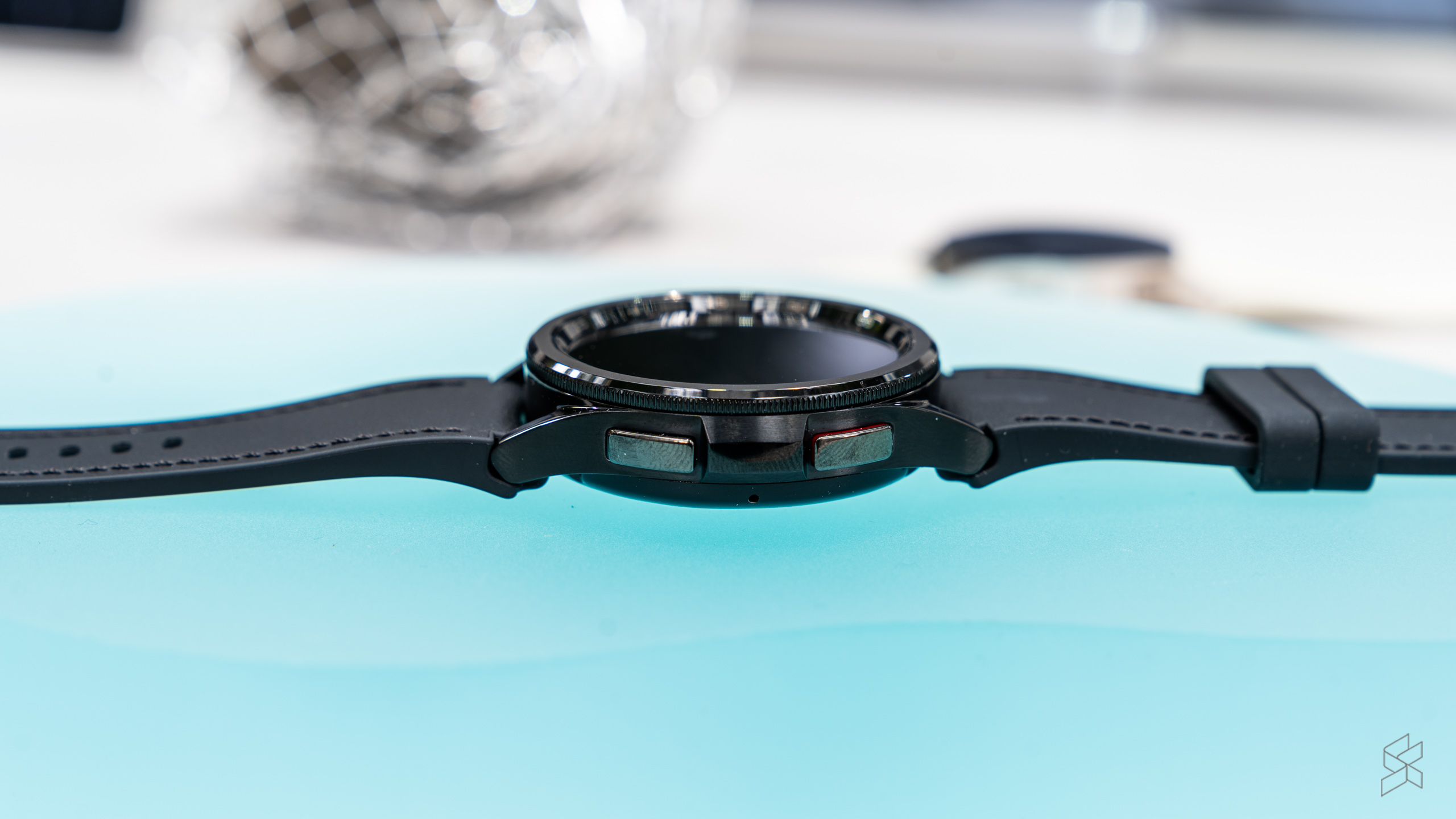
Other notable upgrades with the Galaxy Watch 6 Classic is a brighter sapphire crystal display capable of hitting 2,000 nits, while powering the wearable is a new Exynos W930 chip that’s 18% more capable than the Exynos W920 in the older Galaxy Watch 5. Battery life has been improved too, with the smartwatch rated as good for up to 40 hours of use, with a quick 30 minute charge able to get it back to 45% again. – RS
Learn more about the Samsung Galaxy Watch 6 Classic here.
SILVER: Apple Watch Series 9
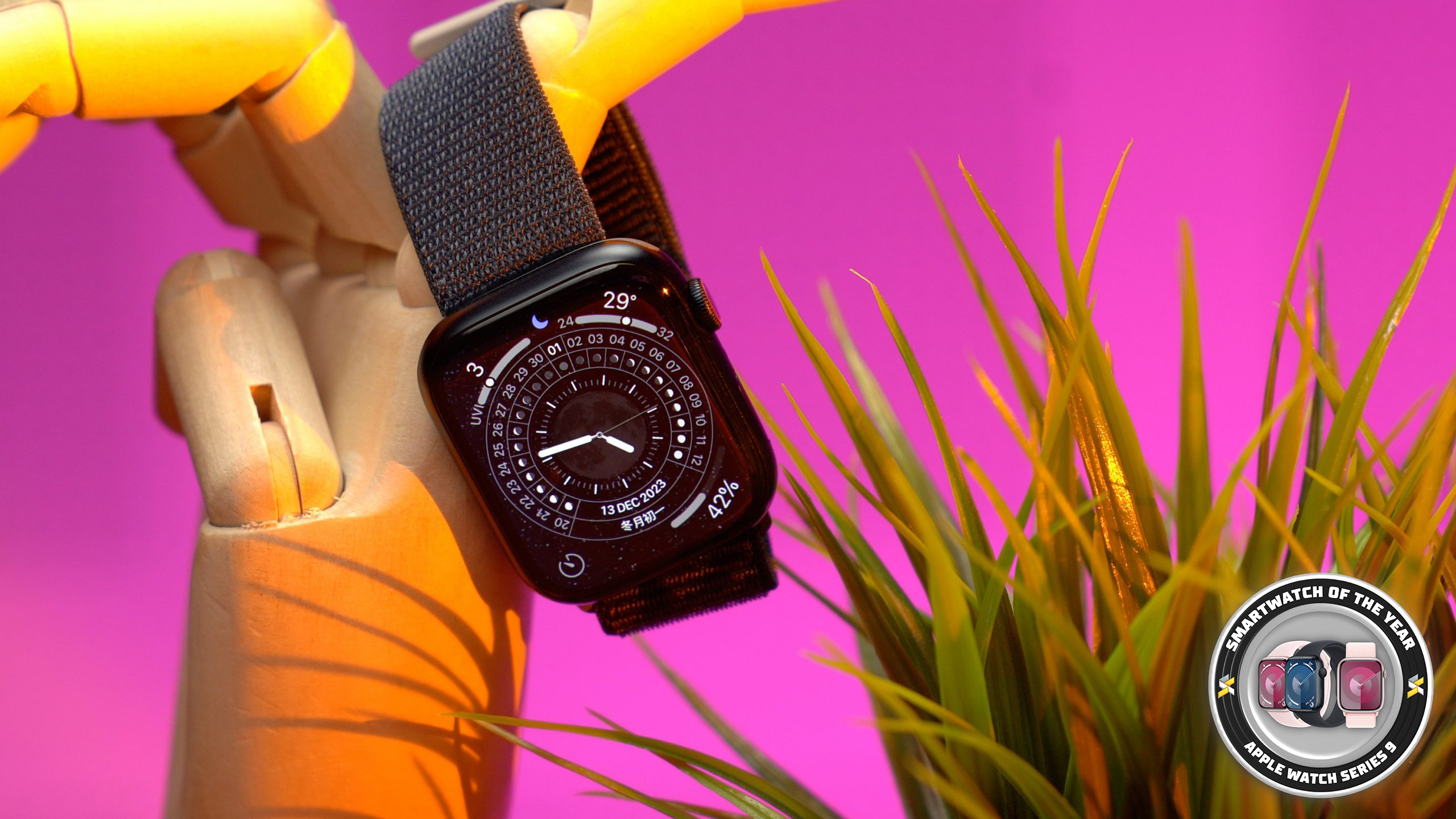
With the Apple Watch Series 9, it mostly ended up on second place due to it not having enough significant changes or upgrades over its predecessor, on top of it being mostly only for those already using an iPhone. That doesn’t mean it’s a bad device; if you’re looking for your first ever smartwatch and you’re firmly in the Apple ecosystem, the Apple Watch Series 9 will undoubtedly be a great wearable, which is why it still comes in at second place on this podium.
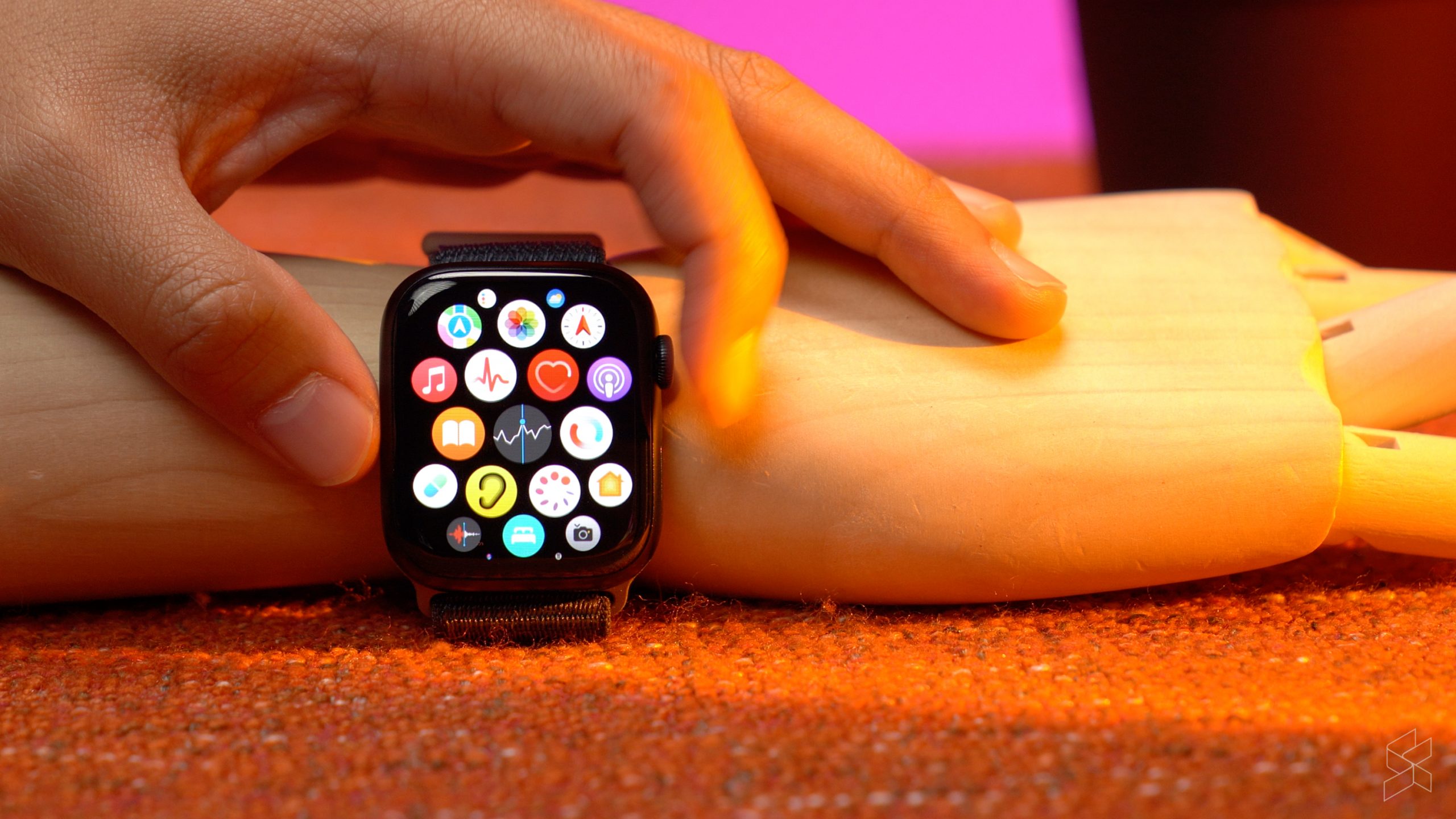
Not only does Apple claim that the Watch Series 9 is now more environmentally friendly—being the first Apple product that they say is ‘carbon neutral’—it also comes with a new Double Tap gesture control using just your index finger and thumb. This lets you control your smartwatch without needing to physically touch the screen itself, allowing for one handed use.
And speaking of the display, it’s still the same size as before, but can reach a higher 2,000 nits peak brightness. All of this is powered by a new Apple S9 chip giving it the same “up to 18 hours” of battery life as seemingly every other Apple Watch. – RS
Learn more about the Apple Watch Series 9 here.
BRONZE: Huawei Watch GT 4
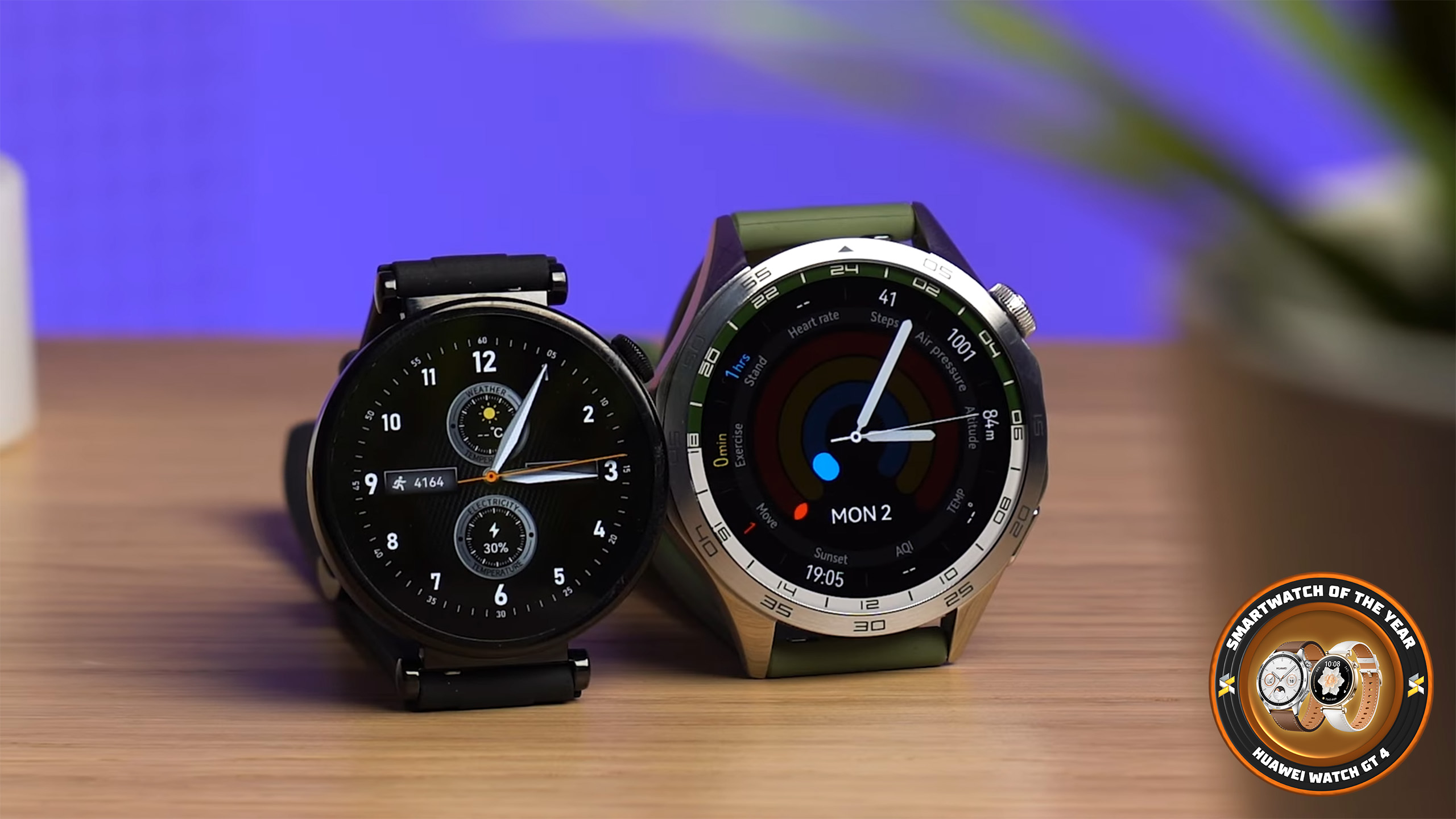
While the Huawei Watch GT 4 may only have placed third on this category, it’s arguably one of the more stylish smartwatches out there too, thanks in part to the four strap options you get, which include a metallic bracelet, a cloth strap, leather and rubber straps.
The smartwatch itself comes in two sizes, with the larger 46mm Watch GT 4 coming with an octagonal chassis build of stainless steel and packing a 1.43-inch AMOLED display. The smaller 41mm Watch GT 4 meanwhile is circular in shape and has a 1.32-inch AMOLED display; both of them do have the same 466 x 466p resolution. The smaller Watch GT 4 also has a 7-day battery life, with the larger one able to survive up to 14 days of use.
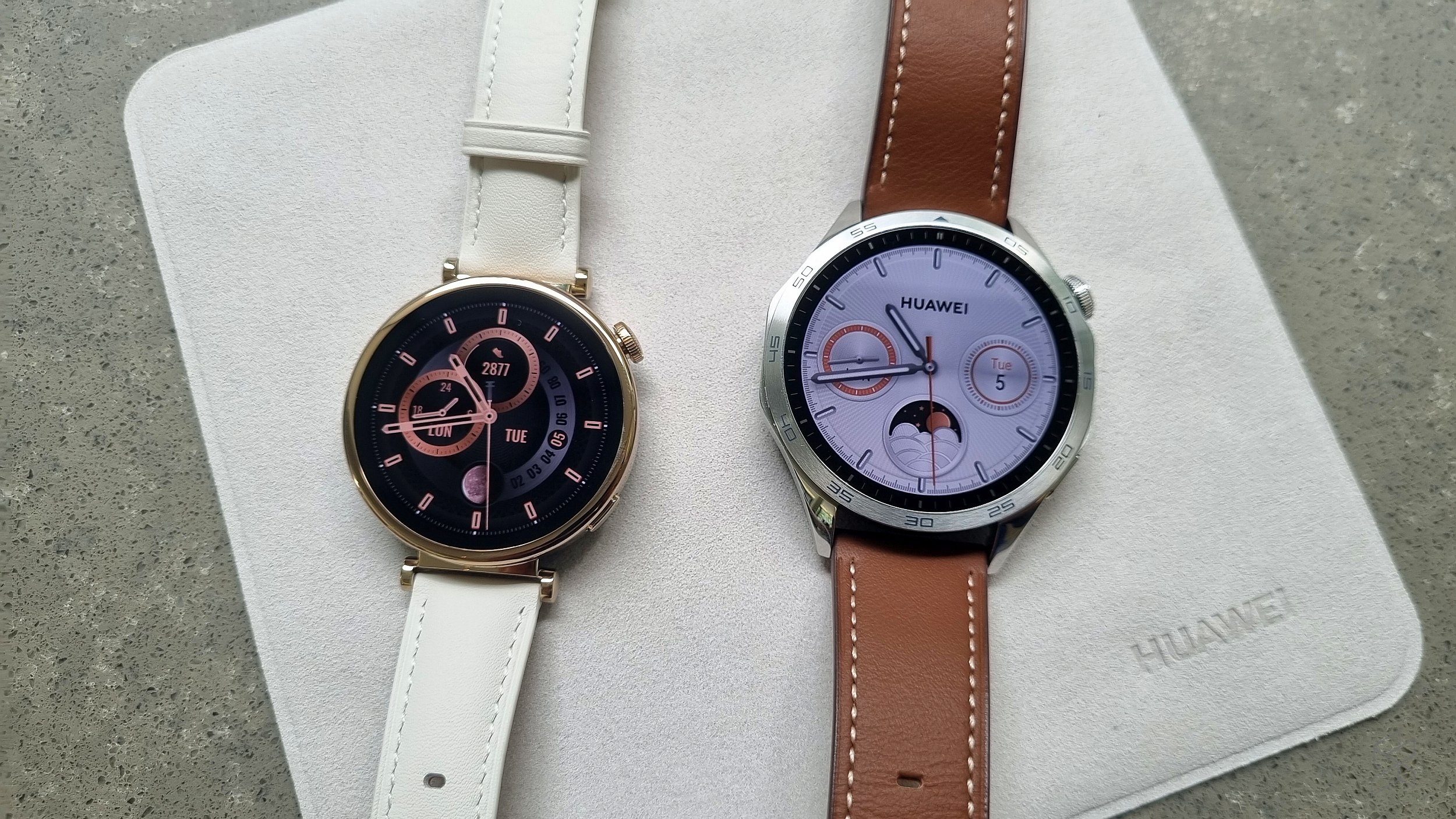
The Watch GT4 has plenty of health features too to track your heart rate, blood oxygen levels, sleep and stress levels, while women can use the menstrual tracker as well. There’s GPS and navigation support on top of over 100 activity modes and speakers to play music directly off the Watch GT 4. – RS
Learn more about the Huawei Watch GT 4 here.
Headphones of the Year
GOLD: Sony WF-1000XM5
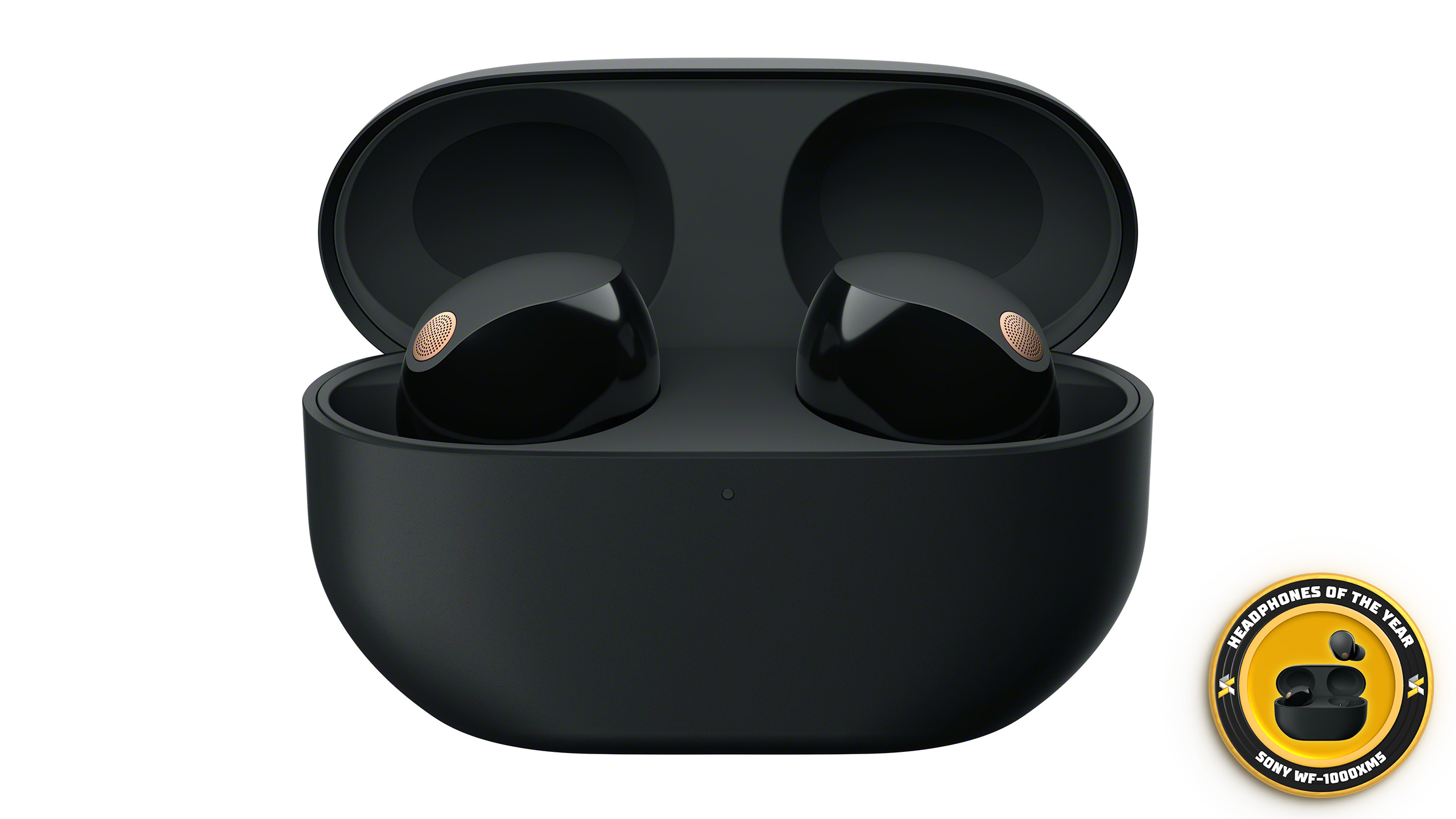
There’s a reason why the Sony 1000XM series are some of the most popular out there. They may not be the best sonically, but when it comes to active noise cancellation, the new Sony WF-1000XM5 is perhaps among the best noise cancelling earbuds out there.
This year’s true wireless earbuds come with improved ANC, richer vocals and lower distortion thanks to the new V2 integrated processor and an updated QN2e noise cancelling processor powering the 8.4mm Dynamic Driver X driver units in each earbud.


The buds themselves are 25% smaller and have an IPX4 water resistance rating too, and can last for up to 8 hours of music with ANC on and up to 12 hours with ANC off. That’s on top of the charging case itself providing an additional 24 hours of use, and you can charge it via USB-C or wirelessly too. – RS
Learn more about the Sony WF-1000XM5 here.
SILVER: Technics EAH-AZ80
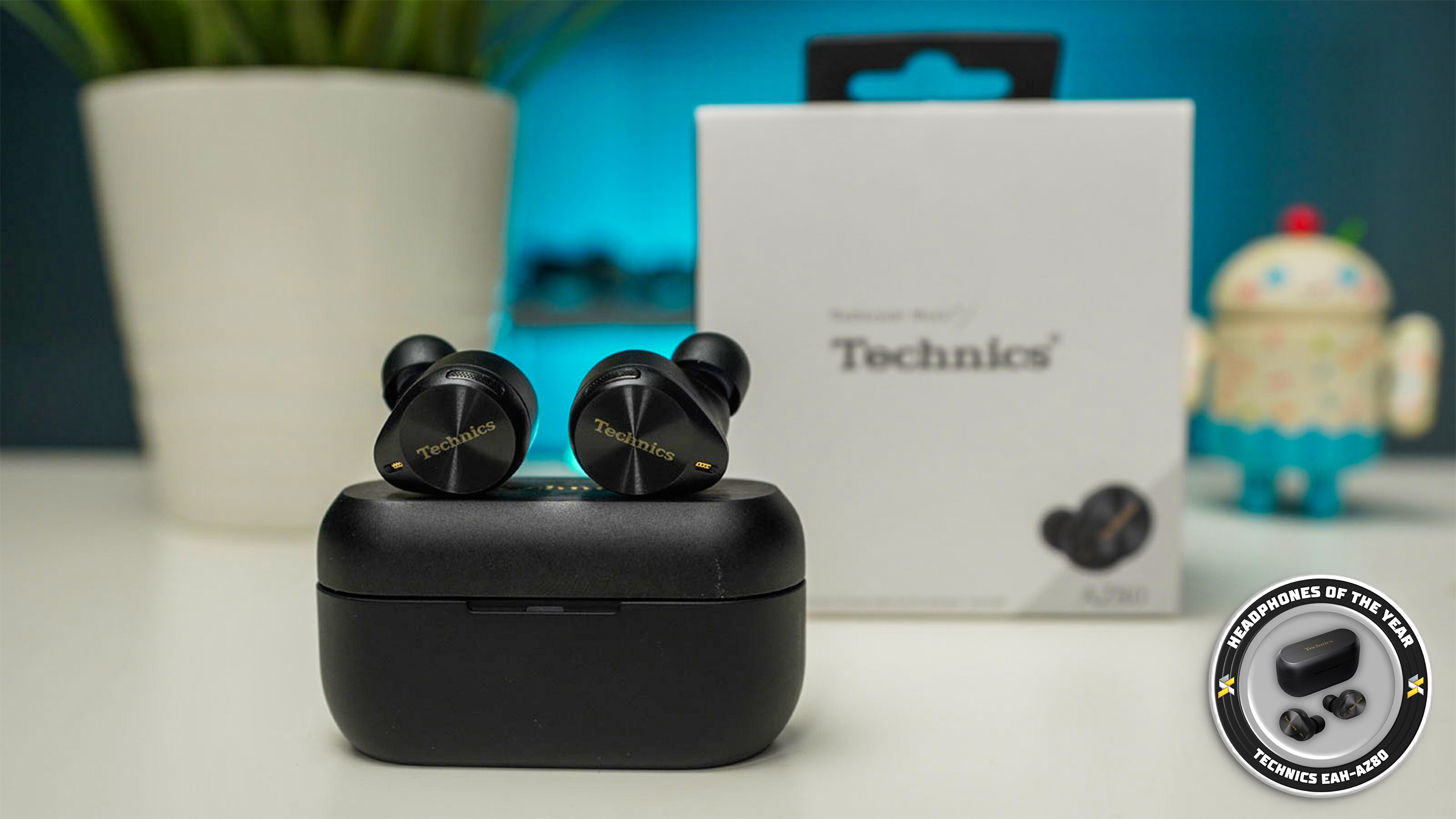
Technics, the legendary marque from Japan, debuted its new EAH-AZ80 true wireless in-ear headphones earlier this year, pitting it right against fellow Japanese manufacturer Sony and its aforementioned WF-1000XM5.
While they are a little bit pricier than the WF-1000XM5s, the EAH-AZ80 does have a slim advantage over the Sony earbuds in driver size, with the EAH-AZ80s boasting a larger 10mm driver. Sharil, who reviewed the EAH-AZ80, also found that the build quality of the EAH-AZ80 was fairly impressive, with a metal finish on the case and a unique design to the earbuds themselves.
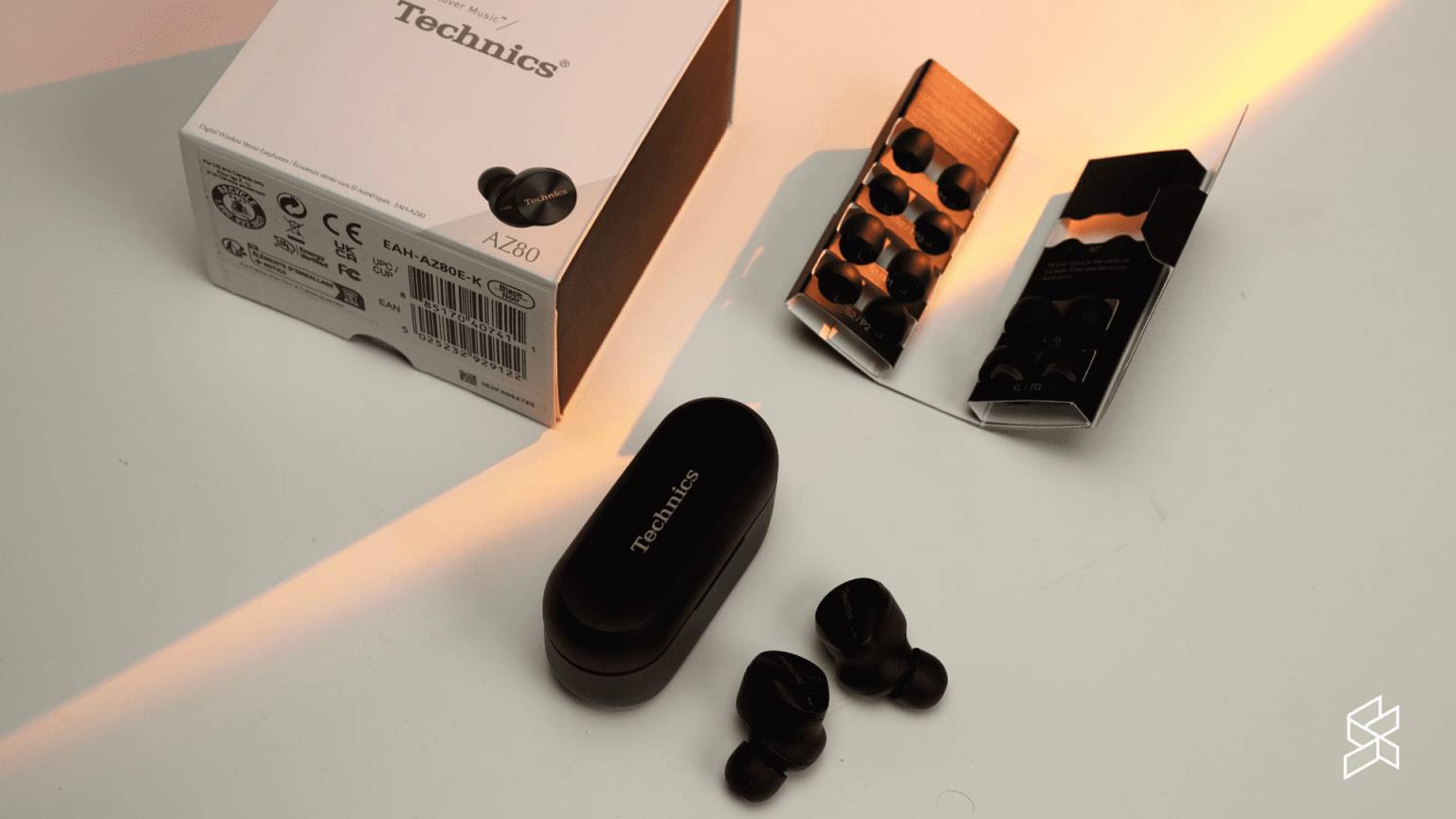
Other premium features include Bluetooth 5.3, ANC and support for LDAC and AAC. However, where it does fall short against the Sony WF-1000XM5 though is in the battery department, with just over 6 hours of use according to Sharil. – RS
Read our full review on the Technics EAH-AZ80 here.
BRONZE: Nothing Ear (2)
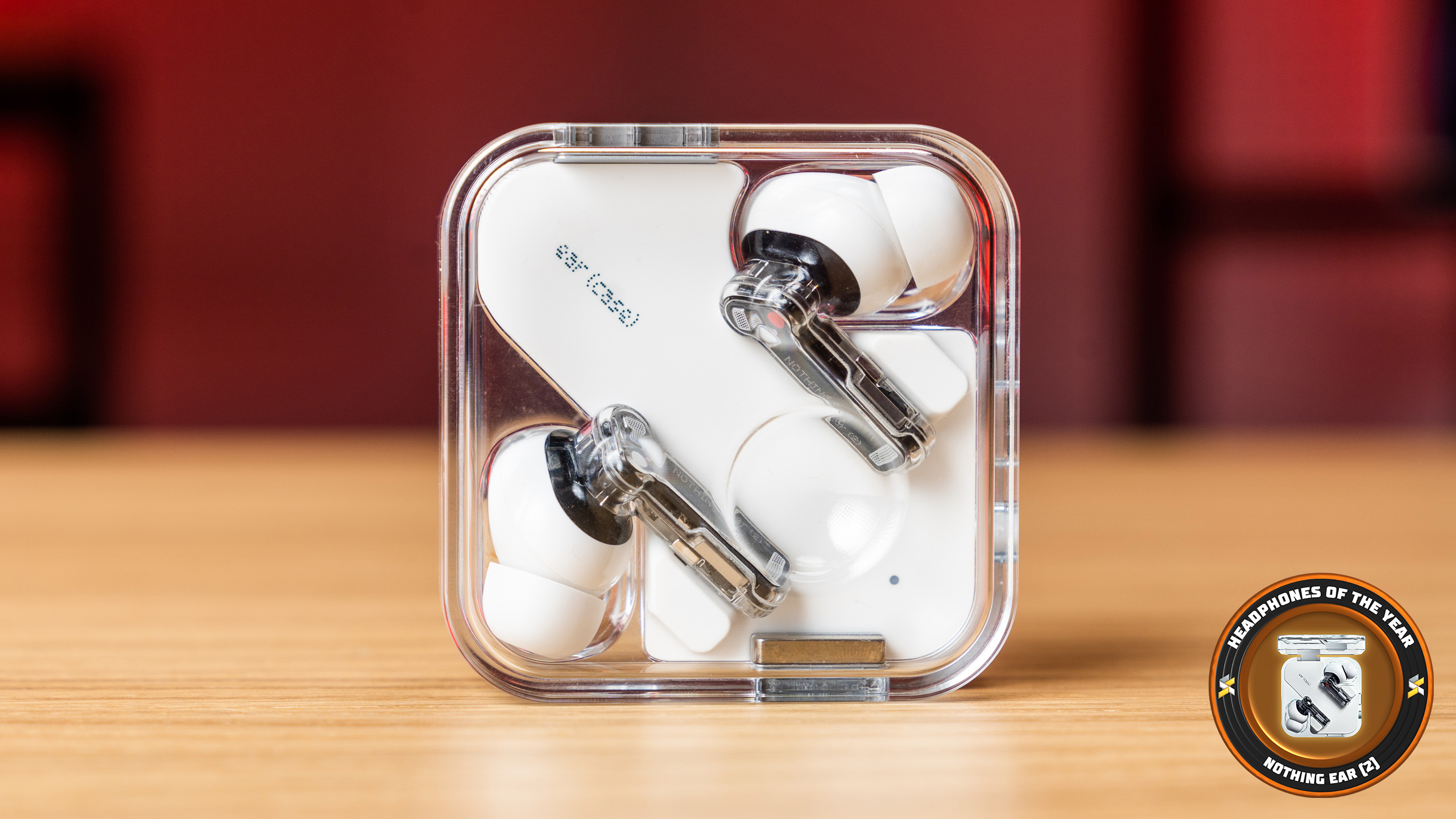
The Nothing Ear (2) are perhaps one of the better true wireless earbuds you can get for under RM600 brand new right now. Despite them sharing a very similar design to the Nothing Ear (1) from before, the transparent design still appeals to plenty of people including ourselves and is a nice change in flavour to the plethora of other earbuds that took on the design language of Apple’s AirPods instead.
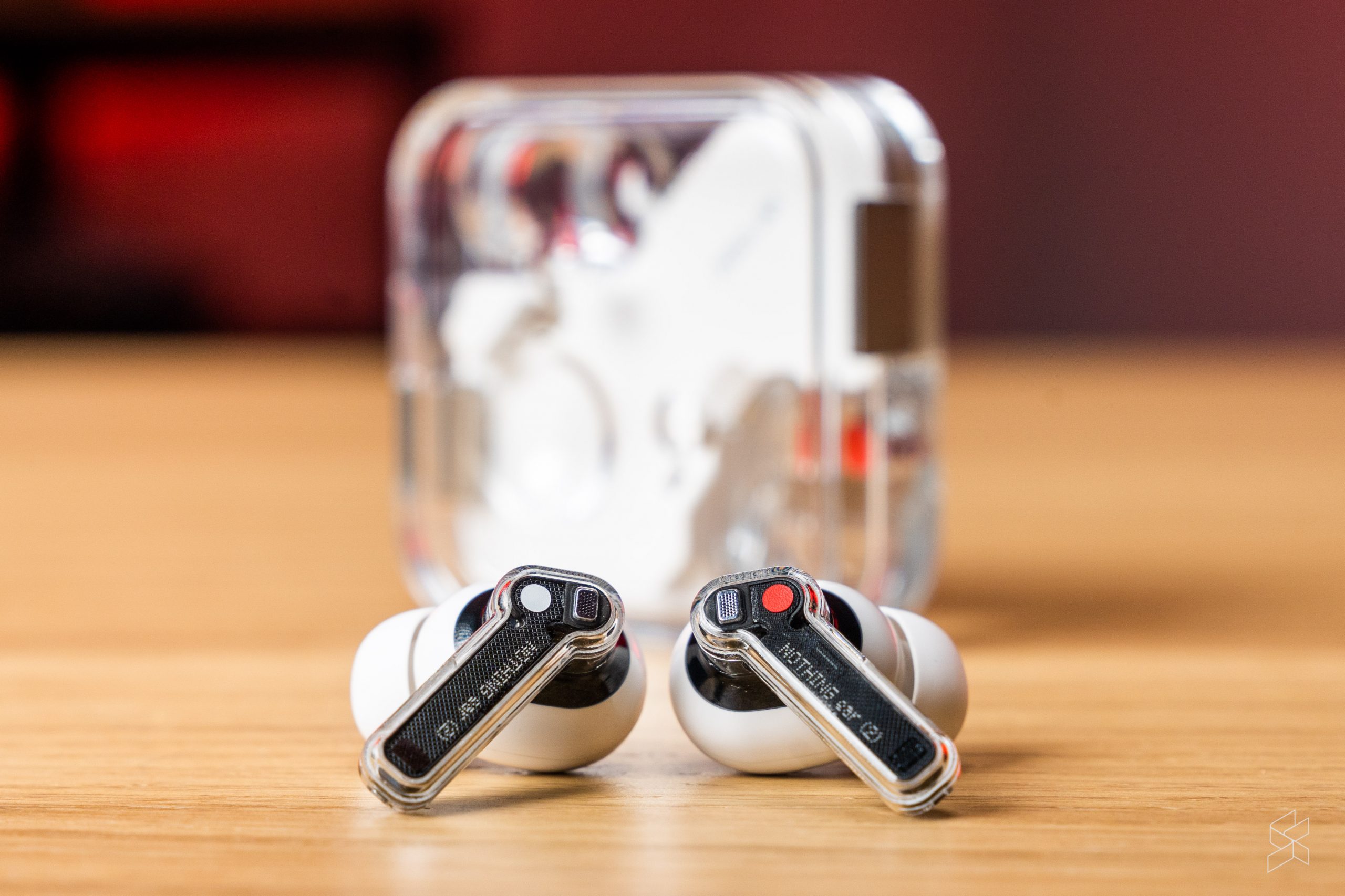
You’ll find 11.6mm drivers in each earbud, 6 hours of battery life without ANC and up to 36 hours of use when you factor in the charging case with wireless charging support present too. Other nice to haves here include multi-device connectivity, improved IP54 dust and water resistance rating and reduced weight compared to their predecessors. – RS
Learn more about the Nothing Ear (2) here.

